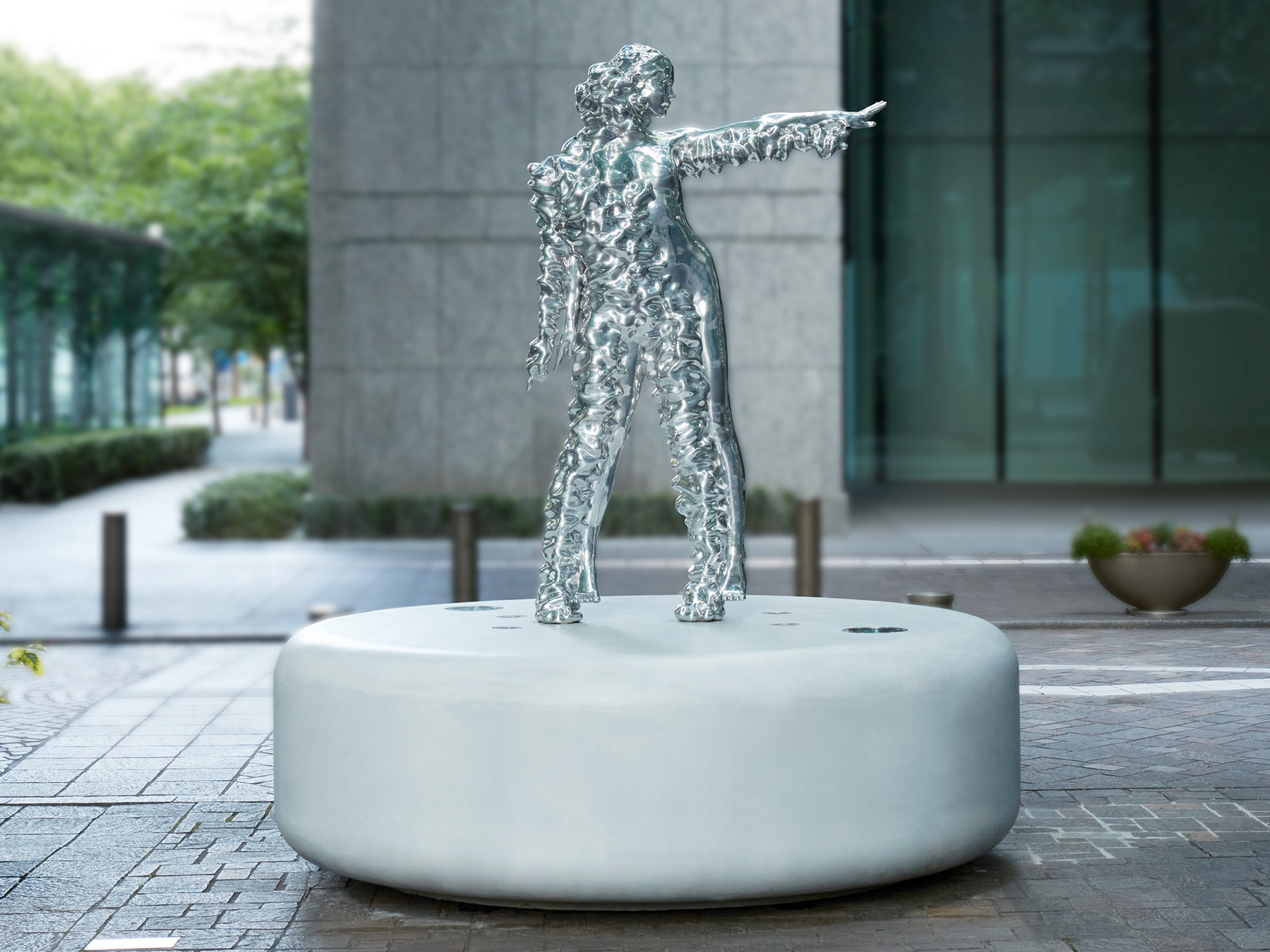——Please tell us about this work.
Around 2011, I began creating the "TRANS" series, which creates sculptures based on data obtained through 3D scanning. “Trans-Double Yana(Mirror)” is an early work.
——Please tell us why you decided to exhibit this work this time.
The "TRANS" series was created based on the idea of creating sculptures in which the real body and the physicality that exists as information overlap. I think I was able to do this because I found the world of information not a distant world, but something like reality and physicality within it. By making “Trans-Double Yana(Mirror)” exist again in this era, I wanted to see for myself how the premonition I had at the time was expressed.
——I think the materials used in public art are limited to some extent. Do you sometimes create works that match the materials?
I think it would be nice to have more materials that are compatible with outdoor environments. This piece is machine-cut from solid aluminum, and while it is a solid and strong material, it is easily scratched. Due to the characteristics of aluminum, it will change slightly as it is displayed, but it has the advantage of being able to reset the surface by polishing it. In addition, this time we applied a nano-coating using nanotechnology to the surface. As this technology develops in the future, there is a possibility that durability will be increased and materials that could not be used outdoors will be able to be used.







